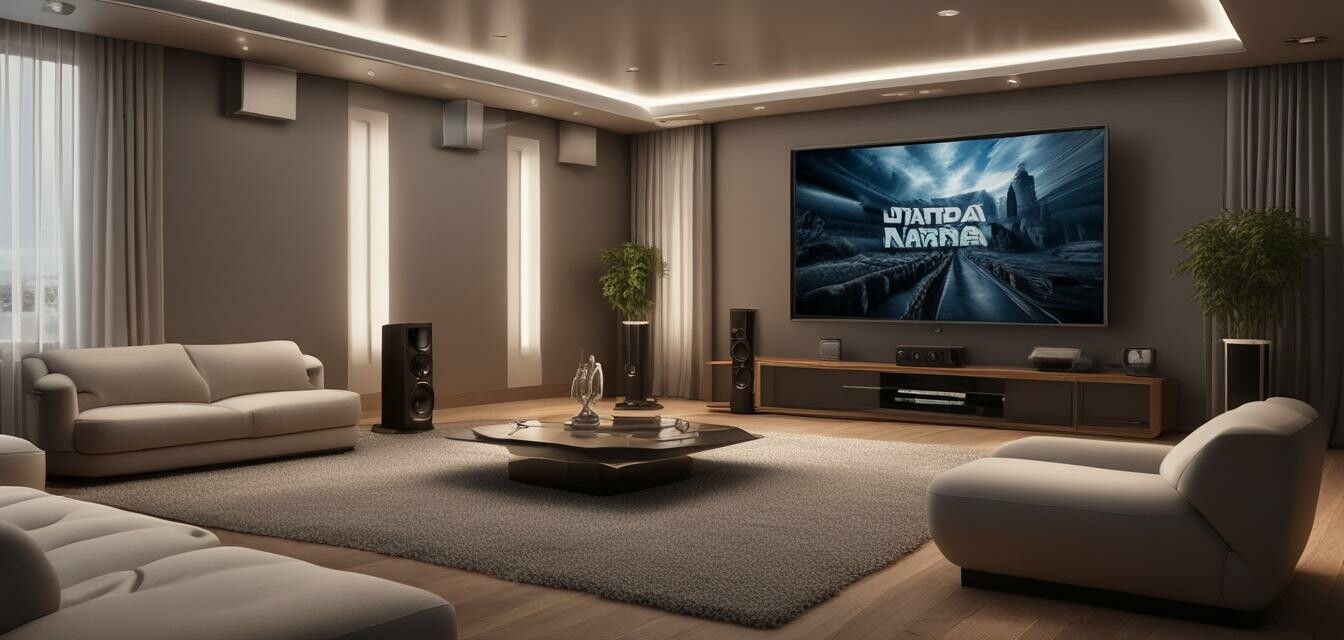
Innovations in 3D Sound Technology for Home Theaters
Key Takeaways
- 3D sound technology creates a more immersive audio experience by adding depth and dimension.
- New audio formats and systems are designed to optimize playback in luxury settings.
- Investing in acoustic treatments enhances sound clarity and removes unwanted noise.
- Understanding the different technologies available is crucial for selecting the right system for your needs.
- Wireless connectivity options provide flexibility and ease of installation for modern setups.
The world of home audio is rapidly evolving, and one of the most significant advancements recently has been in 3D sound technology. This innovation allows audiophiles and casual viewers alike to experience movies and music with a level of immersion that makes you feel right in the middle of the action. Whether you are a tech enthusiast or someone looking to upgrade their home theater, understanding these advancements can help you make informed decisions about your audio setup.
Understanding 3D Sound Technology
At its core, 3D sound technology involves audio that is perceived as coming from all around, not just from conventional left and right speaker channels. This technology includes various formats, including:
- Dolby Atmos: Adds height channels to create a dome of sound around you.
- DTS:X: Offers flexible sound placement in a three-dimensional space.
- Object-based audio: Allows sound to be treated as individual objects that can move around the listener.
The Advantages of 3D Sound Systems
| Feature | Standard Surround Sound | 3D Sound Technology |
|---|---|---|
| Immersion Level | Moderate | High |
| Sound Placement | Fixed | Dynamic |
| Compatibility | Limited | Wide |
| Setup Complexity | Simple | Can be complex |
What to Look For in 3D Sound Systems
When considering a system equipped with the latest 3D sound technology, look for the following elements:
- Audio Formats: Ensure the system supports multiple audio formats like Dolby Atmos and DTS:X.
- Speaker Configuration: Assess whether you require surround sound speakers, subwoofers, and any up-firing speakers for height audio.
- Scalability: Choose a system that can easily integrate additional speakers as needed.
- Acoustic Treatments: Invest in acoustic treatments to enhance your listening environment.
- Wireless Capabilities: Opt for systems that offer seamless connectivity and ease of use.
Latest Trends in 3D Sound Technology
As technology continues to advance, several trends are shaping the future of 3D sound in home theaters:
- Integration with Smart Home Systems: New 3D sound technologies are being designed to integrate seamlessly with smart home systems for enhanced control.
- AI-Powered Audio Optimization: Use of artificial intelligence to analyze room acoustics and automatically adjust sound settings.
- Phoenix Formats: Emerging audio formats that promise even higher fidelity and immersive experiences.
Tips for Setting Up Your 3D Sound System
Beginner's Section
- Start with a good quality A/V receiver to handle 3D sound formats.
- Position your speakers according to recommended guidelines for optimal performance.
- Consider acoustic panels or soundproofing solutions for better clarity.
- Test different placements and configurations to find what works best for your space.
Conclusion
Innovations in 3D sound technology are transforming home theater experiences, making them richer and more immersive than ever before. By understanding the different audio formats and technologies available, as well as keeping an eye on the latest trends, you can create a high-end audio environment that meets your entertainment needs. Stay updated with our blog about the latest developments in this exciting field.
Pros
- Incredibly immersive audio experience.
- Flexible sound placement options.
- Supports a variety of audio formats.
- Enhances overall entertainment experience.
Cons
- Can be expensive to set up.
- Complex installation for optimal performance.
- May require additional equipment for best results.

